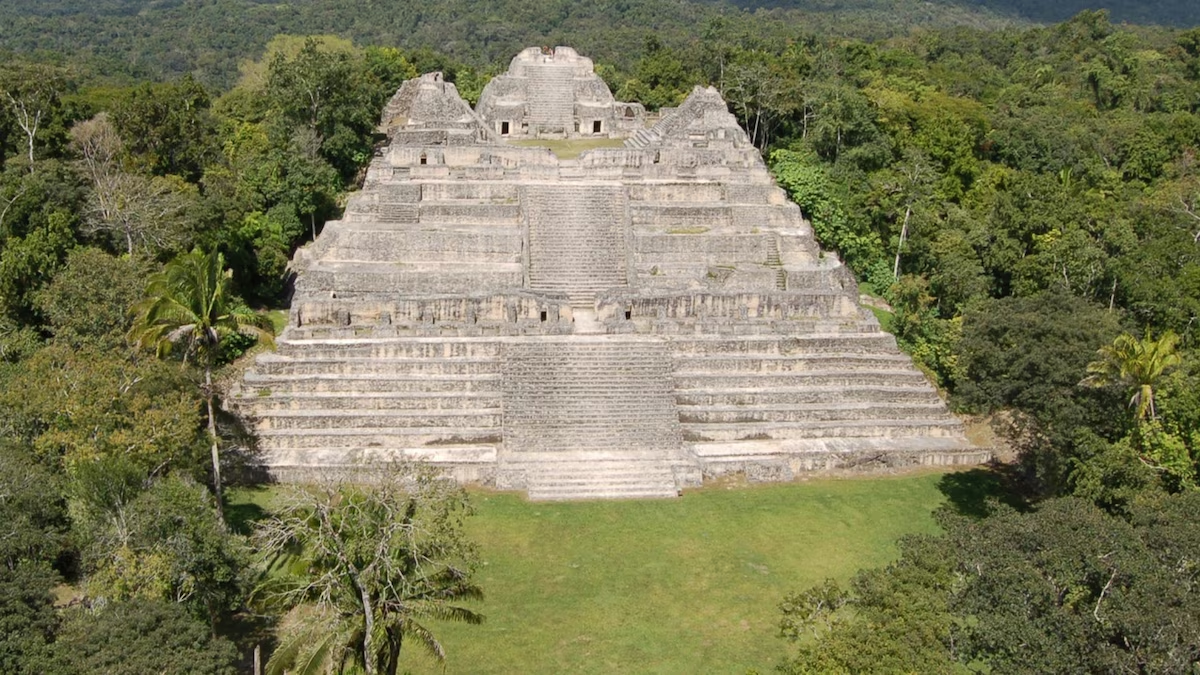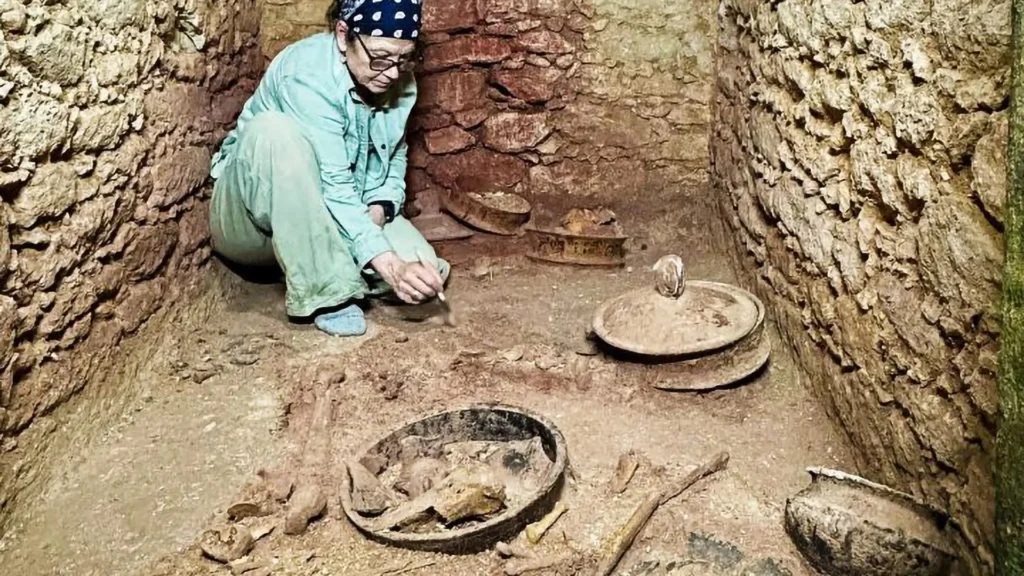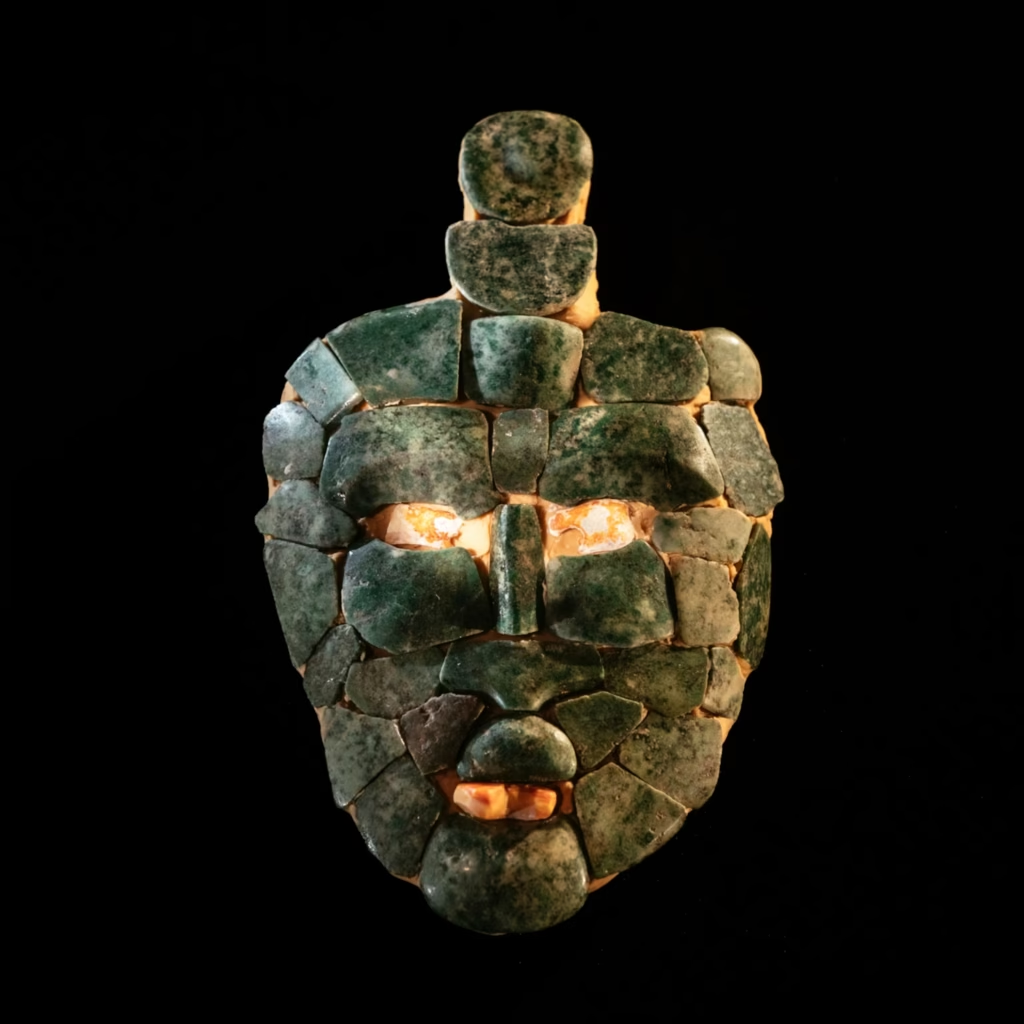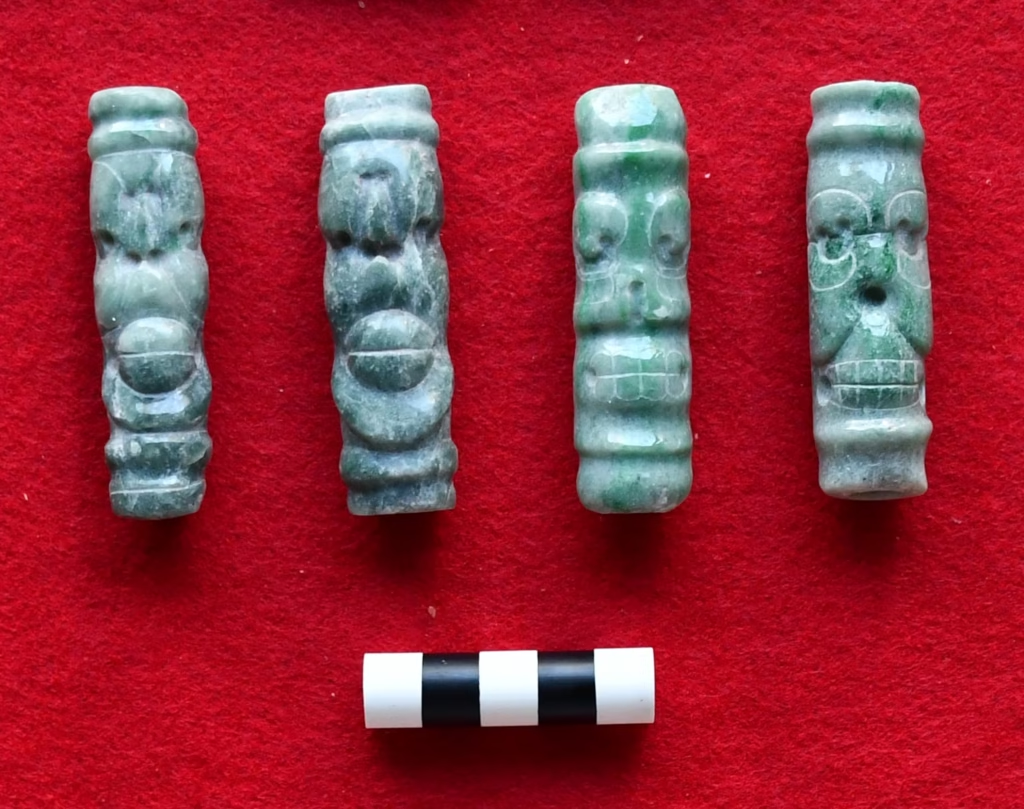“Scientists Discover Maya King’s Tomb Buried in Jungle for Over a Thousand Years”

In a groundbreaking archaeological discovery, scientists have unearthed the tomb of a Maya king, shedding new light on the political, religious, and artistic life of one of the most advanced civilizations of the ancient world. Buried deep beneath the ruins of a long-abandoned Maya city, the tomb not only holds the remains of a powerful ruler but also reveals an astonishing array of artifacts—jade jewelry, ceremonial objects, painted ceramics, and hieroglyphic inscriptions—many of which had remained untouched for over a thousand years.
This remarkable find not only enriches our understanding of the Classic Period of Maya civilization (250–900 CE), but also highlights the growing role of modern science, technology, and Indigenous knowledge in piecing together Mesoamerica’s forgotten past.
Where and How the Tomb Was Found
The tomb was discovered beneath a ceremonial pyramid structure in the ancient Maya city of El Zotz, located in northern Guatemala near the more well-known site of Tikal. Excavation at El Zotz has been ongoing for years, but the tomb was located beneath an unassuming platform, hidden under layers of rubble and vegetation.
Archaeologists identified the structure using LIDAR (Light Detection and Ranging)—a remote sensing technology that allows researchers to “see” beneath dense jungle canopies. After ground-penetrating radar confirmed underground anomalies, a careful excavation began. As the team dug deeper, they uncovered a stone chamber sealed with limestone slabs, indicating an elite or royal burial.
The Identity of the Maya King
While the exact identity of the ruler is still under investigation, early evidence suggests the tomb belonged to a king or high-ranking noble who ruled El Zotz or was connected by blood or alliance to nearby dynasties such as those at Tikal or Calakmul.
A crucial clue comes from an elaborately painted ceramic vessel found inside the tomb. The vessel includes Maya hieroglyphs referring to a “holy lord of Pa’Chan,” believed to be an ancient name for El Zotz. Another glyph block describes the individual as a “divine ruler,” confirming the burial was no ordinary interment but that of a highly significant person in Maya society.
DNA analysis of bone fragments and isotope testing may eventually help confirm the individual’s age, lineage, and health at the time of death. Some preliminary evidence suggests he may have died young—possibly in his 30s—and was buried with full ritual honors.


What Was Found in the Tomb
The tomb contained an extraordinary collection of Maya funerary treasures, including:
- Jade ornaments and necklaces, which symbolized power and connection to the gods
- Painted ceramic vessels, some inscribed with glyphs indicating the name of the ruler or the occasion of burial
- Obsidian blades, likely ritual offerings or symbols of sacrifice
- Marine shells and animal bones, part of ritual depositions
- A unique bone carving etched with religious scenes and text—possibly used in royal ceremonies
Perhaps most stunning was the presence of a jade funerary mask, delicately crafted and likely intended to guide the king’s spirit to the afterlife. Jade was considered more valuable than gold in Maya culture and symbolized fertility, life force, and divine power.
Religious and Cultural Significance
In Maya belief, death was not an end but a transition to the underworld (Xibalba). Elite tombs were often located under temples or pyramids to maintain a cosmic connection between the heavens, the earth, and the underworld. The presence of sacrificial remains in or near the tomb—possibly attendants or warriors—suggests elaborate funerary rituals accompanied the burial.
The inscriptions and symbols found in the tomb also reflect cosmological themes, including the journey of the soul, the calendar cycle, and the king’s divine status. Some glyphs appear to date the tomb’s construction to around 350–400 CE, a time of intense political rivalry between Maya city-states.
Implications for Maya Archaeology
This discovery adds a critical piece to the puzzle of Maya royal lineage, succession, and regional politics. El Zotz, once overshadowed by the grandeur of Tikal, now appears to have played a more central role in the power dynamics of the Petén Basin. The tomb also provides insight into Maya artistry, funerary customs, and religious beliefs during a formative period in their history.
Moreover, it highlights the effectiveness of combining modern technology with traditional archaeological methods. LIDAR and digital mapping are transforming how researchers explore ancient landscapes once thought inaccessible due to dense jungle and decay.
Collaborative and Ethical Archaeology
Significantly, this discovery was made in collaboration with local Guatemalan archaeologists, Indigenous Maya communities, and international research teams. The team has emphasized the importance of preserving cultural heritage and ensuring that artifacts remain in Guatemala, where they can be studied and displayed for future generations.
Efforts are also underway to involve local students in the excavation process and to develop museum exhibitions and cultural programs that reflect the living legacy of the ancient Maya.
Conclusion
The discovery of the tomb of a Maya king and his ancient treasures is more than just a sensational archaeological find. It is a testament to the brilliance of Maya civilization—its political complexity, spiritual richness, and artistic mastery. As researchers continue to analyze the site, they will not only piece together the life of a long-forgotten ruler but also gain deeper insights into a civilization that continues to captivate the world with its enduring mystery and grandeur.





